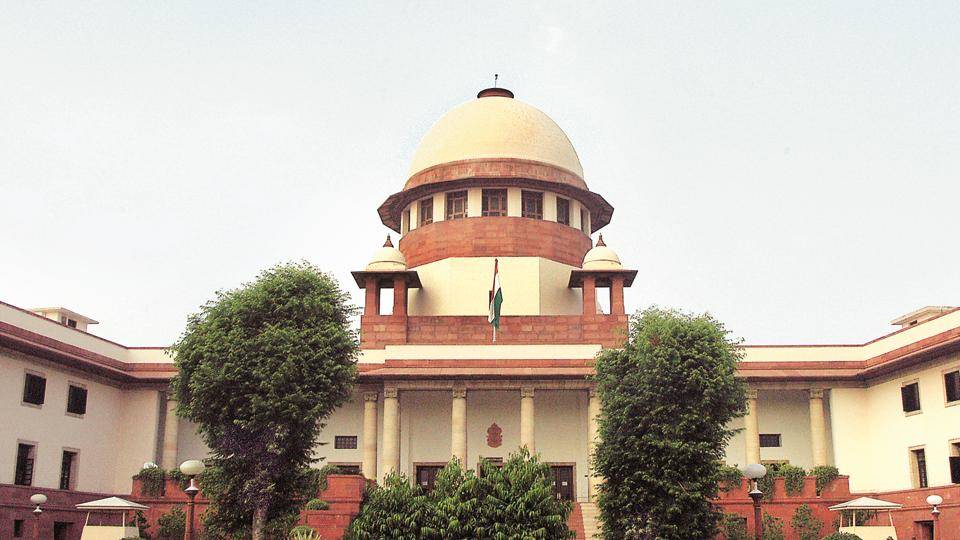Supreme Court curbs the use of biometric ID program
September 28, 2018 | Expert Insights

India’s top court upholds world’s largest biometric ID program but outlines limits and strikes down controversial clauses from the act.
Background
Aadhaar is a 12-digit unique-identity number issued to all Indian residents based on their biometric and demographic data. The data is collected by the Unique Identification Authority of India (UIDAI). The Central Government contended before the Supreme Court on May 3rd, 2017 that it is mandatory for citizens to have a unique identification number and hence a person cannot refuse to provide their samples of fingerprints and iris.
The idea of Aadhaar card was introduced by Nandan Nilekani on 26th November of 2012. The vision behind it was to empower residents of India with a unique identity and a digital platform to facilitate authentication.
On June 2017, the Supreme Court passed an order on compulsory linking of an individual’s income tax PAN and Aadhaar numbers. The central government has stood firm on giving welfare benefits only for those with Aadhaar after 30 June. The government claims that by linking the Aadhaar with PAN, authorities will be able to crack down on people who are escaping the tax net.
Since December 2017, five judges of the Supreme Court have begun hearing a number of petitions that want the court to stop the government from forcing people to link their Aadhaar number to access public services and benefits. As a result of these hearing, the Supreme Court extended the deadline to link the Aadhaar number to public and private services to March 31st, 2018.
Analysis
India’s Supreme Court has upheld the validity of a giant and controversial government program to collect and store the biometric data of its billion-plus citizens but placed new limits on how the data can be used and stored.
A five-judge panel ruled 4 to 1 that while the government’s flagship Aadhaar program has huge benefits in delivering welfare efficiently, biometric data can no longer be used by private entities such as banks or cellphone operators for authentication purposes, curbing the program’s ambitious scope as a universal ID.
“Aadhaar empowers the marginalized section of the society and gives them an identity,” Justice Arjan Kumar Sikri said in delivering the 1,448-page verdict. The judgment also noted, however, that “there needs to be balancing of two competing fundamental rights, right to privacy on one hand, and right to food, shelter, and employment on the other hand.”
Over the years, it has morphed from a welfare delivery tool to a near-necessity for everyday life in India. Citizens have been asked for their Aadhaar cards to access a host of government and private services, including new bank accounts, school enrolments and airline reservations.
The Supreme Court’s order will restrict the program’s usage to government services only — Aadhaar will be necessary for collecting food rations or fuel subsidies but no longer for opening a bank account or getting a new cell phone SIM card. Children, upon reaching adulthood, can now opt out of the program, should they no longer need welfare services from the state.
Counterpoint
The program’s flaws are evident. Critics say that some of India’s neediest were denied their food rations and other welfare entitlements because of authentication errors or Internet connectivity problems.
Media outlets and online activists also reported vulnerabilities in the technology and the way in which the data is collected — a report by the Centre for Internet and Society said government websites may have accidentally leaked details of 135 million citizens.
Additionally, there has been no remedy for those whose details were stolen during a series of data breaches over the past four years. Furthermore, this latest judgement curbs banks and telecom companies from demanding Aadhar for their services from now onward, however, the judgement does not address the already-submitted Aadhar numbers which are currently in private databases.
Assessment
Our assessment is that centralised and inter-linked databases lead to profiling and self-censorship, which can endanger our freedom. The purpose of Aadhar was to provide a platform to the poor and the marginalised to access various social security schemes directly without the need of an intermediary. We believe that development and progress should not come at the cost of privacy of India’s citizens. We also feel that this judgement is a step in the right direction, especially in the age of rapid digitization and frequent cyber-attacks.








Comments